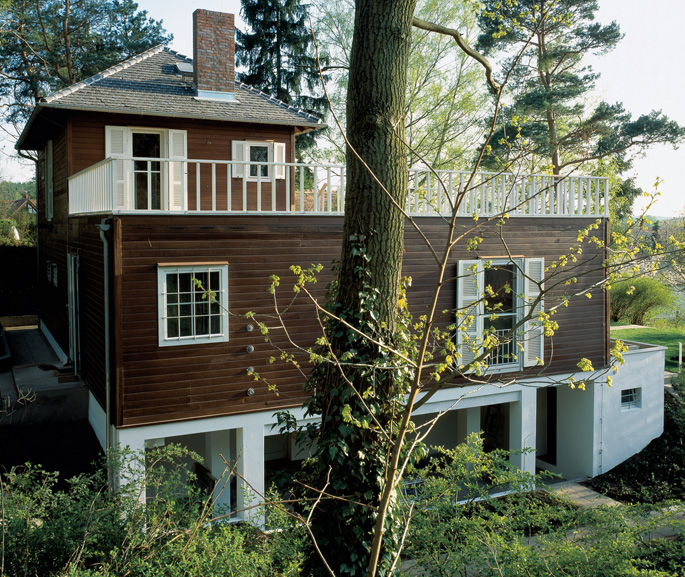A House

Einstein once wrote of his conviction that God does not play dice. If the new quantum theories emerging in the 1920s didn´t shake that belief, then the experience of building his own house might have. Chance so pervades the story of his house in Caputh that it is hard to imagine even a higher power divining its outcome.
In early 1929 Einstein received a visit from the mayor of Berlin, Gustav Böss. On the occasion of Einstein´s fiftieth birthday, the city wanted to present its most famous scientist with a country estate on the water. Would he be interested? If Einstein´s answer was predictable he often took sailing trips with friends on the Havel, and frail health following a circulatory collapse the previous year made the idea of a relaxing getaway thoroughly appealing then everything that followed was not.
When Einstein´s wife, Elsa, went to inspect the first house that the city offered, she discovered it was inhabited, and the owner promptly informed her that she was trespassing. The city had apparently overlooked the fact that the previous owners retained the right to occupy the house. Böss offered to have the tenants evicted, but Einstein didn´t want others to lose their home just so he could have his. The mayor proposed that the city find a plot of land and build Einstein a new house instead.
While the city was searching for a suitable property, a 28-year-old architect named Konrad Wachsmann was sorting the mail one day at Christoph & Unmack, a large construction firm in the Saxon town of Niesky, when he came across a tiny news item announcing that Berlin was to build Albert Einstein a house in the country. Asked about his preferences, the article reported, Einstein was supposed to have wished for a wooden house. This caught Wachsmann´s attention. Christoph & Unmack was one of Germanys most important industrial producers of wooden homes. The firm began in the late nineteenth century as a specialist in portable barracks and field hospitals. Later it produced houses for the civilian market. Postwar shortages in steel and concrete forced German architects and engineers to consider the possibilities of wood as a modern building material. In the 1920s, Christoph & Unmack began collaborating with eminent Bauhaus designers, among them Walter Gropius and Hans Scharoun, who were actively promoting the use of wood.
As soon as he finished reading the article, Wachsmann decided that he was going to build Einstein´s house. Coming to this idea required more than a bit of cheek. Not only had Wachsmann never met Einstein, he didn´t exactly have the credentials of someone destined to build the house of a world-renowned scientist.